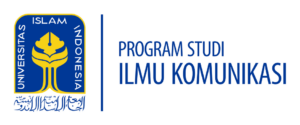FKI 2nd: Lesson Learnt Creating Creative Media from Awarding FKI
The FKI (Inspirational Content Festival) has finally reached its conclusion. Ikonisia TV presented an awards ceremony, as well as interviews with the judges, for a competition to make creative and inspirational content. Regardless of whether they won, participants received immediate feedback on their effort.
On November 30, 2021, the announcement and awarding of the 2nd FKI were broadcast live on Ikonisia TV’s Youtube page. Ifa Zulkurnaini, a researcher at the Center for Alternative Media Studies and Documentation (PSDMA) NADIM of the UII Communications Department, hosted the event, introducing Bagoes Kresnawan also known as Bagus Tikus, one of the judges, and Heri Fadlie, another jury member.
There are three competitive categories in this year’s FKI tournament. The first is the fiction category. Bagoes claims that anyone who chooses a work in the Fiction category is unafraid of being evaluated or of any other fear. “For friends, laying the first foundation is a watershed moment. Bagoes said on the works in the Fiction category, “Valuable quality issues will be established over time.”
Video podcasts are another option. This podcast, according to Bagoes, is a trap-filled genre. “It sounds simple, chatting and hearing people share,” says the narrator. But what people tolerate is that they stay to watch till the finish,” Bagoes, who is also the founder of huntingpasar (dot) id, added. “But that’s fine; podcasting allows people to talk freely.” Unlike others, iPod broadcasting, for example, people chat, is intimate. The point is intimacy, depth,” he added.
As for the documentary category, it must capture the world as it is. “It has to inspire or move,” said Bagoes. According to him, documentaries are also a medium for social criticism. People will feel moved. Many pitfalls arise when working on a documentary, said Bagus, sometimes the documentary makes you bored. “I like it the most when there are many conflicts, the phenomenon of the land mafia, for example. How to deal with continuous conflicts. In storytelling, there are ups and downs. It moves people to think and act,” added Bagoes, telling his experience about the characteristics of the documentary.
Especially the things that need to be prepared and matured by the participants are in terms of story writing. “Sometimes we feel that this can be more interesting. It should be able to plot it like this. Interesting. The problem of image quality is that it’s easy; it’s a matter of tools. You can buy or rent it,” said Bagoes. The most important thing is about writing the script. But about what message we will convey, it requires a long reflection.
The key to a good documentary, said Bagoes, is also the approach to the film’s subject. “I approached Mr. Min, my documentary subject used to take two weeks. I ate there, ordered food and drink many times. Chatted, he trusted us, it was comfortable,” said Bagoes. Even Bagoes finally became acquainted and understood whether the subject was easy to joke or stubborn and so on. “So we know the character first,” he said. So please don’t rush to do it. Want to go viral fast. You can stop by, ask how, play, close first. Good human relations. Because the core of the documentary is to capture reality.
Bagoes said there are many theories in approaching the subject in our films. “Don’t just seem to take advantage or use it. The important thing is that while taking pictures, later you want to be cool or go bankrupt, it’s up to you. Periodically contact the subject. Ask for news. Then also establish good relations,” said Bagoes, telling his experience.
According to Heri Fadli, another jury, many approaches or storytelling techniques can be used in producing documentaries. For example, short or long documentaries are interactive, expository, participatory, and observational approaches.




